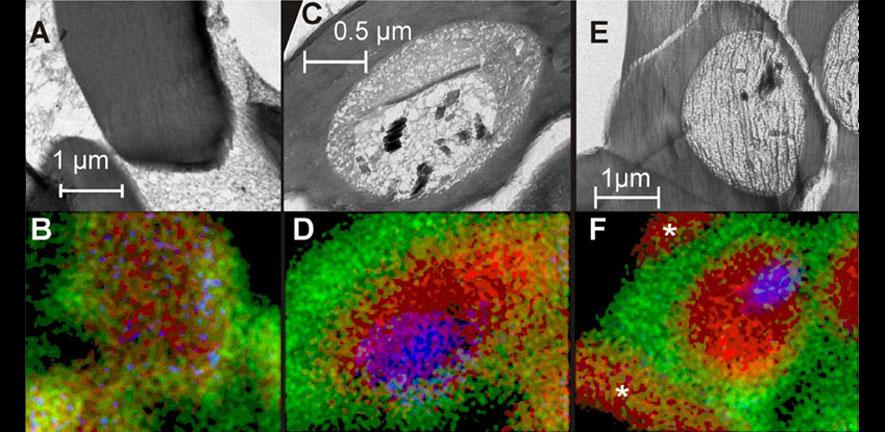
Molecular mechansims of Neurodegeneration
We have discovered that disease related protein amyloids possess an intrinsic fluorescence upon adoption of fibrillar structures [1] This can be used to study growth kinetics of amyloids directly in vitro without any requirement for fluorescent labeling [2] for example for the development of drug screening platforms, based on microfluidic technologies [3].

We have also developed highly specific and sensitive sensor concepts that can be used for tracking protein aggregation in vivo. For example, we were able to follow the kinetics of aggregation of alpha synuclein, the protein at the heart of Parkinson’s disease (PD), in live C. elegans expressing the protein and to relate the appearance of aggregate species to toxic phenotypes in the worm [4].
Recently we have also pioneered the use of direct stochastic optical reconstruction microscopy (dSTORM) for optical superresolution imaging of protein fibrils directly in neuronal cells [5].
We use these techniques in research to answer questions such as: Which are the toxic species leading to neurodegeneration? How do these species traffic from cell to cell? How can we inhibit aggregation or infectivity through the application of small molecule drugs? This research is highly interdisciplinary in nature and is performed in conjunction with neurobiologists, chemists, biophysicists and medics and a large part of it is performed within the Wellcome Trust/MRC funded Neurodegenerative Disease consortium, of which we are members.
[1] Chan FTS et al., "Protein amyloids develop an intrinsic fluorescence signature during aggregation" (2013)
[2] Pinotsi D et al., "A label-free, quantitative assay of amyloid fibril growth based on intrinsic fluorescence" (2013)
[3] Fidalgo LM et al., "From microdroplets to microfluidics: Selective emulsion separation in microfluidic devices" (2008)
[4] Kaminski Schierle GS et al., "A FRET sensor for non-invasive imaging of amyloid formation in vivo" (2011)
[5] Kaminski Schierle GS et al., "In Situ Measurements of the Formation and Morphology of Intracellular ß-Amyloid Fibrils by Super-Resolution Fluorescence Imaging" (2011)
The homeostasis of Malaria infected blood cells

Plasmodium falciparum is the cause of the most deadly form of malaria. Carried by the Anopheles mosquitoes, it is transmitted to the human blood stream as the mosquitoes feed. The merozoites, the parasite's daughter cells, start the asexual cycle of P.falciparum invading red blood cells (RBC), where, at the trophozoite stage, they ingest haemoglobin (Hb), growing and modifying the biochemical environment of the RBC to their advantage. The trophozoites mature to the schizont stage, ready to segment into daughter cells (16-32 hrs after invasion) and induce the bursting of the red blood cells in order to re-initiate the infection cycle. Two stages of infection are under investigation in our laboratories: 1) the erythrocytic cycle and the parasite induced volume and haemoglobin changes, and, 2) the pre-invasion process and interaction with pathogen and blood cell membrane We investigate these process with a range of live cell microscopy and theoretical tools. For more details see here.
The work is collaborative with the laboratories of Dr. Virgilio Lew and Dr. Teresa Tiffert (Pathology, Development and Neuroscience), Dr. Julian Rayner (Sanger Institute), and Dr. Pietro Cicuta (Cavendish laboratory).
Virus Research

Using super-resolution imaging together with correlative electron microscopy we study the structure and function of proteins involved in the formation of virus particles which are central to a range of infectious diseases. This programme is currently centred on a 2 year Leverhulme research grant in collaboration with Dr Colin Crump at the Department of Virology.
We also collaborate with Prof. Andrew Lever to study at virus particle assembly and trafficking [1].
[1] Cheung W et al., "Rotaviruses associate with cellular lipid droplet components to replicate in viroplasms, and compounds disrupting or blocking lipid droplets inhibit viroplasm formation and viral replication." (2010)
